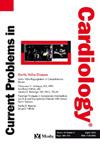Pathophysiology and management of postural orthostatic tachycardia syndrome (POTS): A literature review
IF 3.3
3区 医学
Q2 CARDIAC & CARDIOVASCULAR SYSTEMS
引用次数: 0
Abstract
Postural Orthostatic Tachycardia Syndrome (POTS) is a form of cardiovascular autonomic disorders characterized by orthostatic intolerance and a symptomatic increase in heart rate upon standing, which can significantly impair patients’ quality of life. Its pathophysiology is complex, multifactorial; thus, a variety of treatment approaches have been investigated. Recent studies have identified three primary POTS phenotypes—hyperadrenergic, neuropathic, and hypovolemic—each requiring tailored management strategies. First-line treatment for all patients focuses on lifestyle modifications, including increased fluid and salt intake, compression garment use, physical reconditioning, and postural training. Currently, there are no medications approved by the United States Food and Drug Administration (FDA)for POTS. Pharmacologic therapies are primarily used to manage specific symptoms, though the evidence supporting their efficacy is limited. In hyperadrenergic POTS, excessive norepinephrine production or impaired reuptake leads to sympathetic overactivity, making beta-blockers an effective option. Neuropathic POTS, resulting from impaired vasoconstriction during orthostatic stress, responds to agents that enhance vascular tone, such as pyridostigmine and midodrine. Hypovolemic POTS, often triggered by dehydration and physical deconditioning, respond primarily to volume expansion and exercise. This review article provides a comprehensive overview of the pathophysiology and management strategies for POTS, with a focus on phenotype-based approaches to guide tailored treatment and improve patient outcomes.
体位性心动过速综合征(POTS)的病理生理学和治疗:文献综述。
体位性站立性心动过速综合征(POTS)是一种心血管自主神经疾病,其特征是站立不耐受和站立时心率的症状性增加,严重影响患者的生活质量。其病理生理是复杂的,多因素的;因此,研究了多种治疗方法。最近的研究已经确定了三种主要的POTS表型——肾上腺素能亢进型、神经性和低血容量型——每一种都需要量身定制的管理策略。所有患者的一线治疗重点是改变生活方式,包括增加液体和盐的摄入量,使用压缩服,身体修复和姿势训练。目前,美国食品和药物管理局(FDA)还没有批准治疗POTS的药物。药物治疗主要用于控制特定症状,尽管支持其疗效的证据有限。在肾上腺素能亢进的POTS中,过量的去甲肾上腺素产生或再摄取受损导致交感神经过度活跃,使受体阻滞剂成为一种有效的选择。由于直立应激时血管收缩受损而引起的神经性POTS,对增强血管张力的药物有反应,如吡哆斯的明和米多定。低血容量性POTS,通常由脱水和身体条件下降引起,主要对容量扩张和运动作出反应。这篇综述文章全面概述了POTS的病理生理学和管理策略,重点介绍了基于表型的方法来指导量身定制的治疗和改善患者的预后。
本文章由计算机程序翻译,如有差异,请以英文原文为准。
求助全文
约1分钟内获得全文
求助全文
来源期刊

Current Problems in Cardiology
医学-心血管系统
CiteScore
4.80
自引率
2.40%
发文量
392
审稿时长
6 days
期刊介绍:
Under the editorial leadership of noted cardiologist Dr. Hector O. Ventura, Current Problems in Cardiology provides focused, comprehensive coverage of important clinical topics in cardiology. Each monthly issues, addresses a selected clinical problem or condition, including pathophysiology, invasive and noninvasive diagnosis, drug therapy, surgical management, and rehabilitation; or explores the clinical applications of a diagnostic modality or a particular category of drugs. Critical commentary from the distinguished editorial board accompanies each monograph, providing readers with additional insights. An extensive bibliography in each issue saves hours of library research.
 求助内容:
求助内容: 应助结果提醒方式:
应助结果提醒方式:


